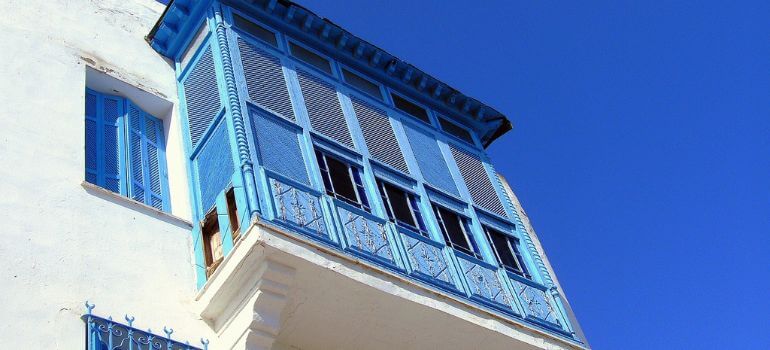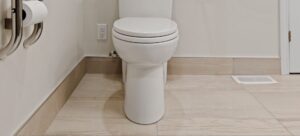Understanding the Importance of Bay Window Insulation
Bay windows can be charming, but they can also be a source of energy loss in your home. Inefficient windows can account for up to 25% of your heating and cooling bills. Proper insulation not only saves you money but also enhances the comfort of your living space.
Assessing Your Bay Window
Checking for Drafts
Before you begin insulating your bay window, inspect it for drafts. Use a candle or an incense stick to detect any airflow around the window frame. Mark the areas where you feel drafts for later repair.
Measuring for Insulation
Accurate measurements are crucial for buying the right amount of insulation material. Measure the dimensions of your bay window, including the width of each section and the depth of the window frame.
Choosing the Right Insulation Material
There are several insulation options to consider for your bay window:
Fiberglass Insulation
Fiberglass insulation is a common choice for bay windows. It is cost-effective, easy to install, and offers good thermal resistance.
Foam Board Insulation
Foam board insulation provides excellent insulation and can be cut to fit the shape of your bay window. It’s especially useful for irregularly shaped windows.
Cellular Shades
Cellular shades are not only a source of insulation but also offer privacy and light control. They trap air in their cells, creating a barrier against temperature extremes.
Preparing for Installation
Gathering Materials
Before starting the insulation process, ensure you have all the necessary materials, including insulation, weatherstripping, caulk, foam sealant, and safety gear.
Safety Precautions
Always prioritize safety when working on home improvement projects. Wear gloves, safety glasses, and a mask if necessary.
Installing Insulation
Adding Weatherstripping
Apply weatherstripping around the window frame to seal any gaps and prevent drafts.
Installing Insulation Panels
Cut insulation panels to fit the dimensions of your bay window and install them snugly between the frames. Ensure a tight fit to maximize insulation.
Installing Cellular Shades
If you opt for cellular shades, follow the manufacturer’s instructions to install them correctly. They should fit within the window frame snugly.
Sealing Gaps and Cracks

Caulking
Apply caulk to seal gaps between the window frame and the wall. Be thorough in sealing any openings.
Using Foam Sealant
Use foam sealant to fill larger gaps and cracks around the bay window. Ensure a proper seal to prevent air infiltration.
Testing for Effectiveness
After insulation and sealing, retest for drafts to ensure that your bay window is now well-insulated. The candle or incense stick should no longer detect any drafts.
Maintaining Your Bay Window Insulation
Regular maintenance is essential to ensure that your bay window insulation continues to perform optimally over the years. Here are some additional tips for maintaining your insulation:
- Clean Regularly: Dust and debris can accumulate on the surface of insulation materials, reducing their effectiveness. Periodically clean the insulation panels or cellular shades to keep them free from obstructions.
- Check for Pest Infestations: Bay windows, especially those near gardens or trees, can attract pests like rodents and insects. Inspect your insulation for any signs of infestation, such as chewed insulation or droppings. Address any pest issues promptly to prevent damage.
- Inspect Weatherstripping: Weatherstripping may wear out over time, so it’s crucial to check its condition regularly. Replace weatherstripping that has become damaged or lost its seal to maintain a draft-free bay window.
- Monitor Caulk and Sealant: Inspect the caulk and foam sealant around your bay window for cracks or gaps. Reapply caulk or sealant as needed to ensure an airtight seal. This will help maintain the integrity of your insulation.
Additional Benefits of Bay Window Insulation
Apart from energy savings and increased comfort, insulating your bay window offers several other benefits:
- Enhanced Privacy: Insulated windows provide an additional layer of privacy. Cellular shades, in particular, offer privacy without sacrificing natural light.
- Noise Reduction: Insulation also acts as a sound barrier, reducing external noise levels inside your home. This can be especially beneficial if you live in a noisy neighborhood.
- Protection of Interior Furnishings: Insulating your bay window helps protect your furniture, artwork, and other belongings from the harmful effects of UV rays. It prevents fading and damage caused by prolonged exposure to sunlight.
- Improved Resale Value: An energy-efficient home with well-insulated windows is an attractive selling point for potential buyers. It can increase your property’s resale value and marketability.
- Environmental Responsibility: Using eco-friendly insulation materials contributes to a more sustainable and environmentally responsible lifestyle, reducing your carbon footprint.
Advanced Insulation Tips
While the basics of bay window insulation have been covered, here are some advanced tips to further improve the energy efficiency of your bay window:
- Triple-Glazed Windows: If your budget allows, consider upgrading your bay window to triple-glazed windows. These windows have three layers of glass with two insulating layers of gas in between. They offer superior insulation and noise reduction.
- Window Film: Applying low-emissivity (Low-E) window film can enhance the insulation of your existing windows. It reflects heat back into the room during winter and blocks heat from entering during summer.
- Drapery and Curtains: Layering your bay window with heavy drapery or thermal curtains can add an extra barrier against temperature fluctuations. Make sure to keep them closed during extreme weather conditions.
- Interior Storm Windows: Installing interior storm windows is another effective way to enhance insulation. These secondary windows create an additional layer of insulation and can be easily removed during warmer seasons.
- Regular Maintenance: It’s essential to maintain your insulation over time. Periodically check for any signs of wear and tear, and replace or repair insulation materials as necessary.
Advanced Insulation Tips
While the basics of bay window insulation have been covered, here are some advanced tips to further improve the energy efficiency of your bay window:
- Triple-Glazed Windows: If your budget allows, consider upgrading your bay window to triple-glazed windows. These windows have three layers of glass with two insulating layers of gas in between. They offer superior insulation and noise reduction.
- Window Film: Applying low-emissivity (Low-E) window film can enhance the insulation of your existing windows. It reflects heat back into the room during winter and blocks heat from entering during summer.
- Drapery and Curtains: Layering your bay window with heavy drapery or thermal curtains can add an extra barrier against temperature fluctuations. Make sure to keep them closed during extreme weather conditions.
- Interior Storm Windows: Installing interior storm windows is another effective way to enhance insulation. These secondary windows create an additional layer of insulation and can be easily removed during warmer seasons.
- Regular Maintenance: It’s essential to maintain your insulation over time. Periodically check for any signs of wear and tear, and replace or repair insulation materials as necessary.
Frequently Asked Questions
Insulating your bay window can save you up to 20% on your energy bills, depending on your location and the quality of insulation used.
If you have basic DIY skills, you can install insulation yourself. However, for complex installations or if you’re uncomfortable with the process, hiring a professional is recommended.
Yes, you can choose eco-friendly insulation materials such as recycled fiberglass or natural fibers like cotton or wool.
Yes, cellular shades are highly effective at insulating windows and can significantly reduce heat transfer.
Insulation can last for many years if properly maintained. Check it annually and replace damaged or deteriorated sections as needed.



